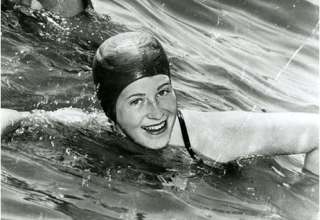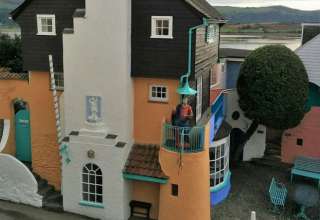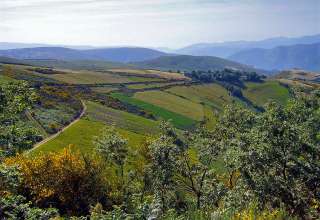Niagara-on-the-Lake’s heritage and culture are amazingly rich for a place of its size. It is steeped in history and a refreshing change after visiting the carny atmosphere of Niagara Falls, 12 miles away. Niagara-on-the-Lake (NOTL) is a welcome breath of quiet and beauty nestled at the mouth of the mighty Niagara River where it flows into Lake Ontario.
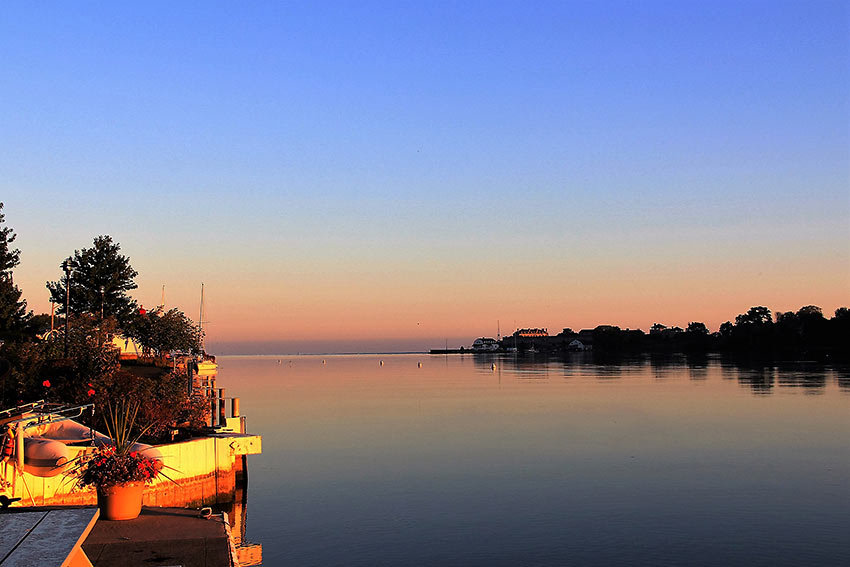
The drive in from the Falls is along the beautiful Niagara Parkway. Winston Churchill described the Parkway as “the prettiest Sunday afternoon drive in the world”. He was in town in 1943 after attending the Quebec Conference when the Allies were planning the D-Day landings in France almost exactly 75 years ago! The Parkway winds along the edge of the Niagara River and forms a welcoming tree-lined entrance to one of the prettiest small towns in all of Canada. On the way you pass the famous monument at Queenston Heights that honours the death of our first national hero, Sir Isaac Brock. The general who helped save Upper Canada in the early days of the War of 1812 but died on this hill in October 1812 during the Battle of Queenston Heights.
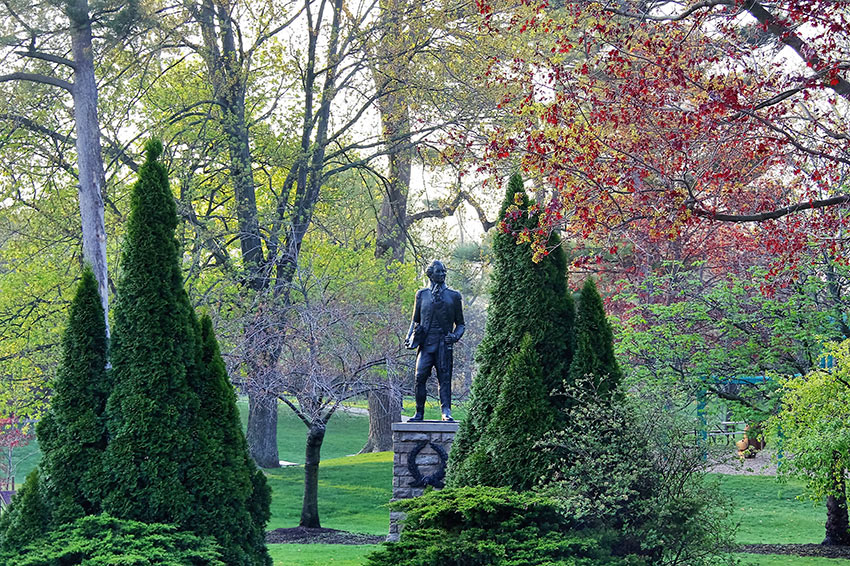
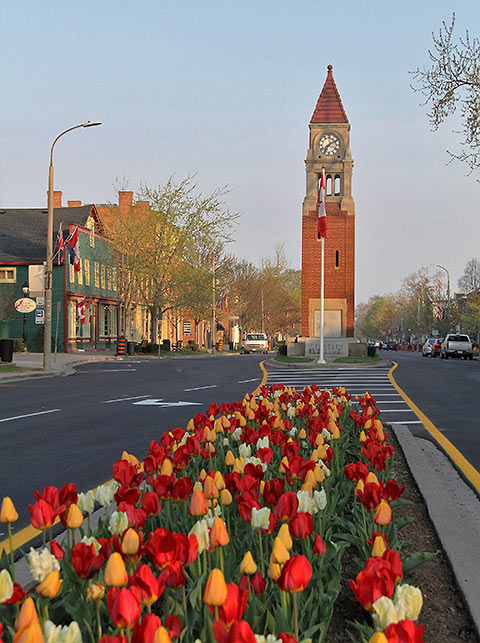
One of the biggest attracters for our nearly 3 million tourists to this small town of just 18,000, are its wineries. Niagara-on-the-Lake has become famous for the wines from its 40 local wineries. Many have excellent restaurants where they pair their fine wines with regional cuisine. The unique climate of the Niagara Region lends itself to winemaking and it is surprising that it is on the same latitude as southern France. The Niagara region is an area which benefits from a unique and moderate micro-climate and mineral-rich soils, making for successful world-class vintages.
This is my hometown. As a way of giving back over the past few years, I have joined a number of town committees as a volunteer. One was the committee that won many National and International awards for the town in a worldwide municipal contest. The Communities in Bloom award in 2017 was on the international stage and Niagara-on-the-Lake won the prestigious gold award over towns its size in the U.S., Ireland, Croatia and many other countries. The Communities in Bloom program is so much more than flowers. Each competing community is judged on greening through environmental, as well as natural heritage conservation and horticultural actions by citizens and municipalities. The wonderful flower displays, and the magnificent hanging baskets downtown draw the attention and admiration of millions of visitors in the spring and summer.
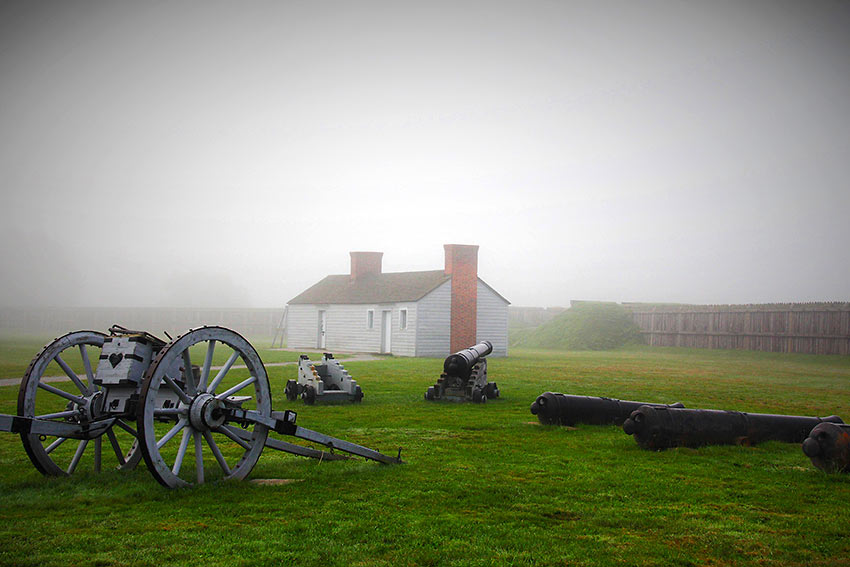
In Niagara-on-the-Lake, I love saying that “history walks beside you”. This was one of the first towns settled in Ontario and was declared the capital of Upper Canada in 1792. It was first settled by United Empire Loyalists. People who were loyal to the British crown and who fled the US after the American revolution. In fact, the US border is nearby, just offshore in the middle of the Niagara River. This historic town boasts a number of National Historic sites and wonderfully restored homes in old town.
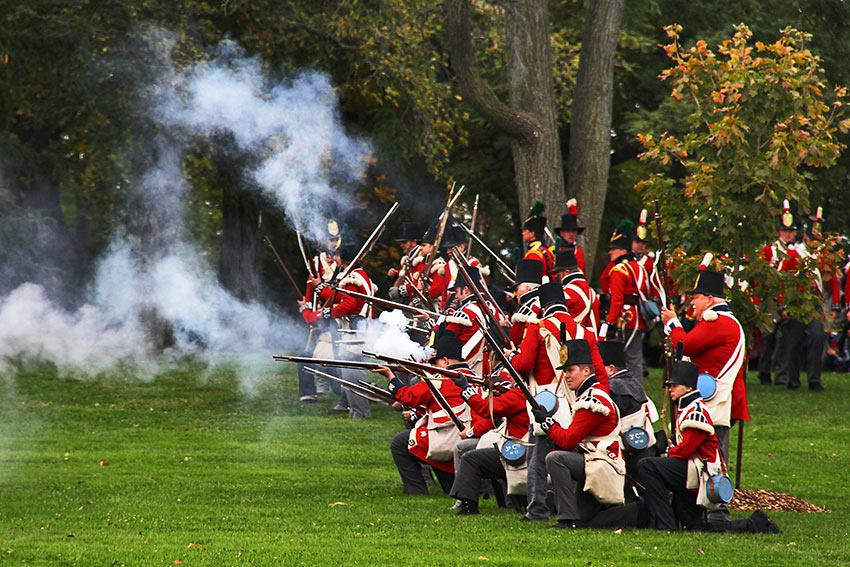
It’s hard to understand the deep heritage of this town without knowing how it suffered during the War of 1812. The US declared war on Britain in June of 1812 and prepared to attack its closest colony, Canada. The first major attack was at Queenston Heights, but the British were victorious despite the death of General Brock. By 1813 the Americans forces were better trained and attacked Niagara in what is known as the Battle of Fort George. They were successful with overwhelming forces and the town was then occupied by the American militia for over 6 months. After the American occupation of Niagara, desertion and disease had reduced the American soldiers’ numbers and by December 1813 they decided to withdraw from Canada to Fort Niagara across the river. But before they left, they (and some Canadian traitors) burned and destroyed the whole town during a winter snowstorm. Virtually every home was put to the torch before being reclaimed by the British. In anger, the British troops retaliated and within 3 months had burned the towns of Lewiston and Buffalo across the river in New York State thus laying waste to the whole Niagara Peninsula.
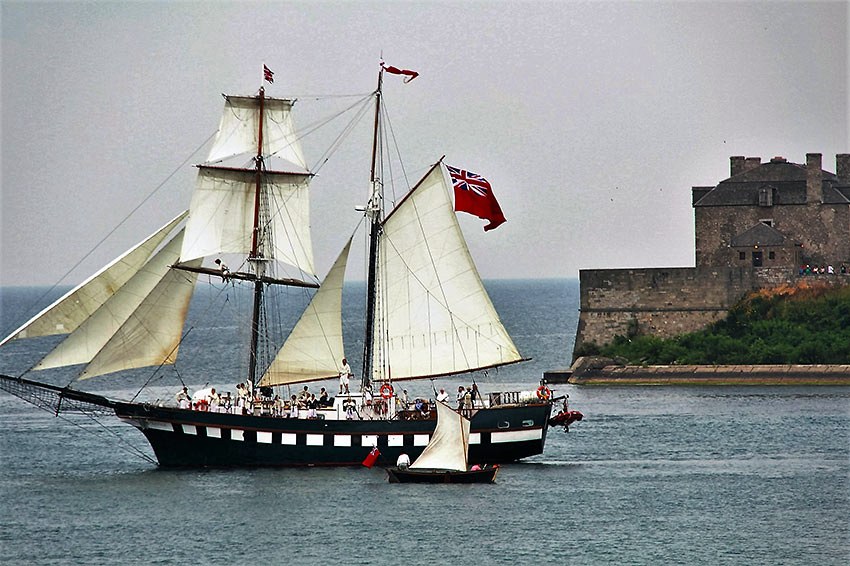
In the years after the war, the town was rebuilt in that beautiful Regency/Neo-Classic style… also known in the US as Federalist. These magnificent 200-year-old homes still stand in all their restored beauty in the quiet tree lined streets of old town today. Niagara-on-the-Lake became one of the first towns in Ontario to have a recognized National Historic District and the old town district offers the largest inventory of heritage buildings in Canada constructed between 1817 and 1850.
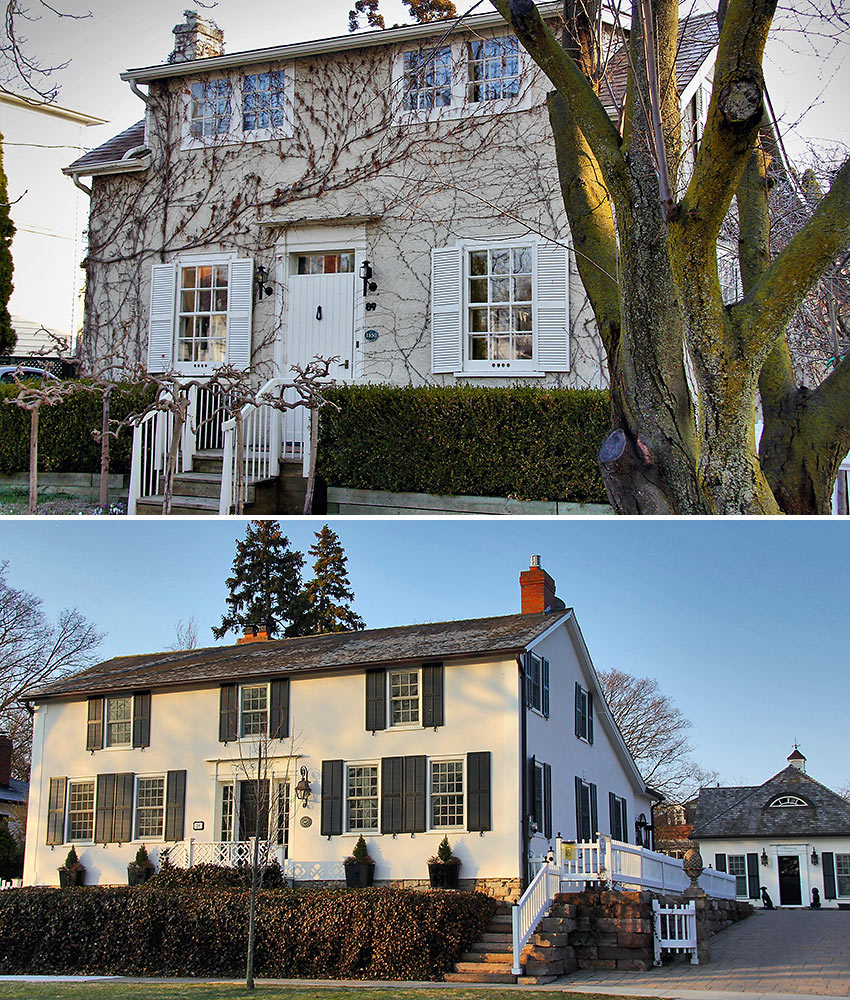
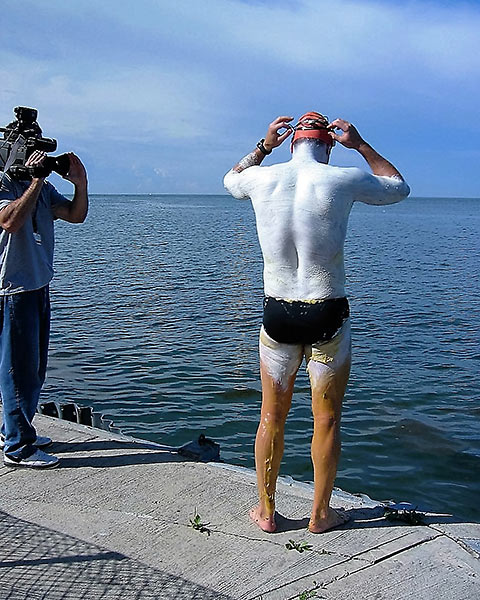
Niagara-on-the-Lake has a lot of natural beauty because it is surrounded on one side by Lake Ontario, with its many moods, and on the other by the mighty Niagara River. The beautiful water views add so much to the charm of our town and help attract nearly 3 million people during tourist season. Many flock to our shoreline and the views of Toronto 32 miles across the lake.
Another interesting fact about Niagara-on-the-Lake is that it is the point for marathon swimmers to start when swimming across the lake to Toronto. In the early 1950s, marathon swimming was a very popular sport. One of the best of the marathoners was young Marilyn Bell and in 1954 she became the first to swim the lake from Niagara to the Toronto shoreline at the age of only 16. It took her 24 hours and captured the imagination of all Canadians. It seems every year more swimmers attempt this grueling 32-mile swim route. There is a plaque in Queens Royal Park honoring these successful swimmers and I’m proud to say my son’s name is on the plaque. I accompanied him (in the luxury of a boat) on his successful 19-hour swim in 2008.
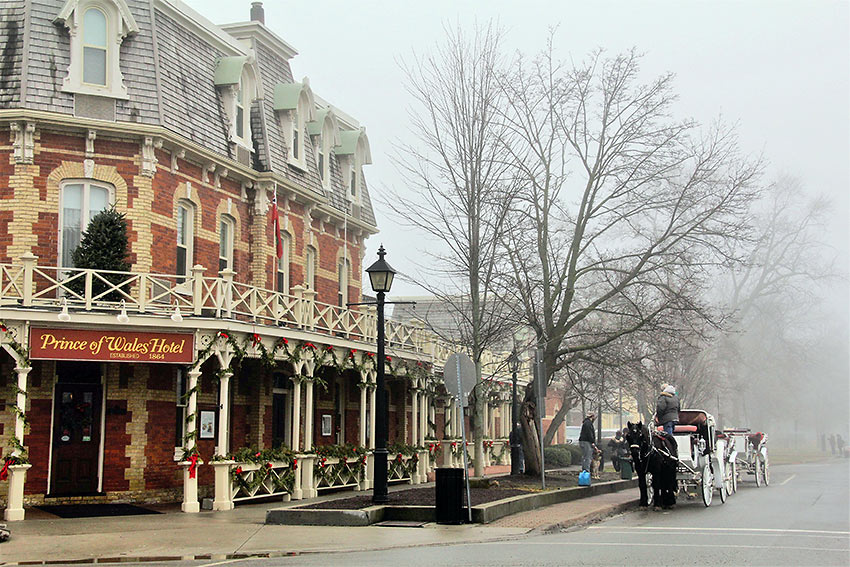
There are seven National Historic sites in our small town protected and maintained by Parks Canada. The most popular with visitors is Fort George. The fort was built around 1800 but was destroyed during the War of 1812. In May of 1813 it was attacked and burned by the Americans. Following the attack and the destruction by “hot shot’ from cannons at Fort Niagara, the town was occupied by American forces. Fort George was carefully restored in the 1930’s based on accurate drawings that still existed in England. Today it welcomes as many as 100,000 visitors from all over the world and costumed interpreters teach tourists and students alike about the impact of the War of 1812. Our nearby houses shudder with the sounds of cannon fire during reenactments in the summer.
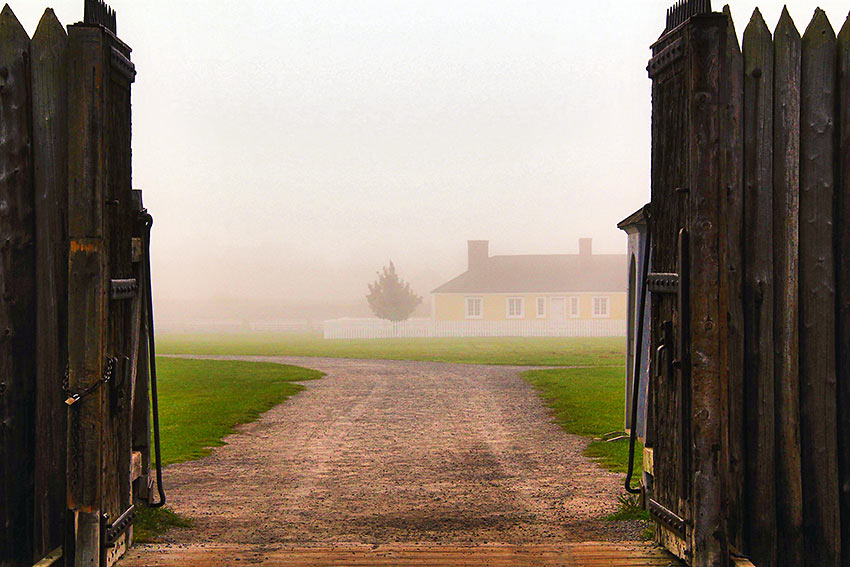
Culture, along with heritage, thrive in this town. For instance, the successful Shaw Festival theater started in the 1960’s and now the Shaw is considered a world class theater destination. In the past 50 years, this theater that has brought with it a cultural rebirth to the town. Now, along with the Shaw we have a number of summer music festivals, including classical music presented by Music Niagara and the annual Jazz Festival which brings music to town parks and wineries.
Niagara-on-the-Lake is a “must visit,” and a wonderful gem on the shores of Lake Ontario.


